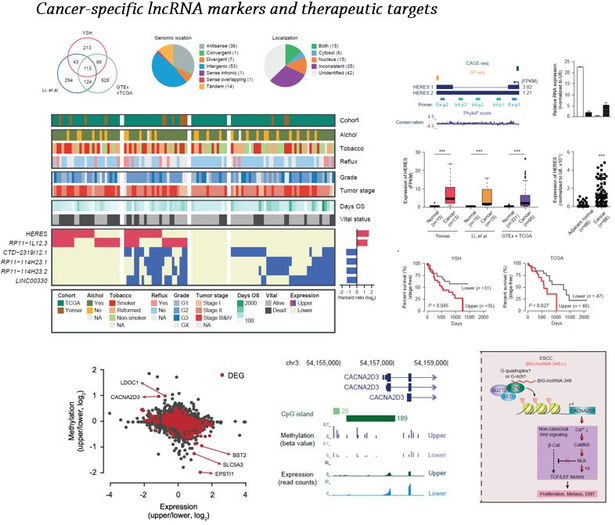Research

We (BIGLab) have been exploring the mysterious hidden wonders of the genome "outback" (a.k.a, the non-coding genome) through both computational and experimental investigations. Recently, we have been developing an advanced BI framework to develop highly reliable and efficient genomic tools, as well as AI-based computational methods to analyze the functions of non-coding elements and design extended synthetic molecules that can be applied to engineering biology and high-throughput screening. Ultimately, my lab is aimed toward answering the following fundamental questions in biology.
1) What are biological roles of non-coding genomes ?
2) How complex are our genome and transcriptomes ?
3) Where do the regulatory non-coding elements reside in metazoa genomes and how do these elements regulate gene expression?
4) How have the coding and non-coding functions of RNAs evolved?
5) How can we learn the optimization strategy of life from nature?
6) Can we design the synthetic molecules better than
If DNA is Hope, then RNA is Dream.
Research
Armed with a strong background in experimental biology, computational biology, and machine learning, I have taken full advantage of high-throughput sequencing technologies to tackle the questions related to gene expression stated above. I am primarily interested in identifying novel regulatory non-coding elements that control gene expression, such as microRNAs (miRNAs) and long non-coding RNAs, and in understanding their mechanisms of action. To achieve these goals, I first reconstructed comprehensive, high-confidence coding and non-coding transcriptome maps in metazoa ranging from C. elegans to human. I next began actively collaborating with geneticists to identify functionally important segments in non-coding genes using a genome-editing approach, as well as with clinicians to search for regulatory non-coding elements and genomic variations that cause cancer development and progression.
Regulatory ncRNAs
We aim to sequence and analyze whole transcriptomes using orthogonal RNA-seqs including general RNA-seqs, deepCAGEs, and 3P-seqs, to identify regulatory ncRNAs including miRNAs and lincRNAs in non-coding genomes, and to elucidate their regulatory roles for gene expressions and critical developmental processes.
Transcriptome maps
We aim to develop computational methods to comprehensively reconstruct transcriptome from multimodal RNA-seqs (stranded and unstranded RNA-seqs) and orthogonal RNA-seqs (deepCAGEs and 3P-seqs). We also have interests in studying mechanisms of alternative splicing / polyadenylations and the relationship to diseases.
Personal Genomics
We aim to develop computational and statistical algorithms and programs for finding and analyzing genetic/epigentic factors related to personal phenotypes (rare and complex diseases and polymorphisms) from whole genome/exome sequencing data. We have interested in finding de novo, somatic, and germline variations in nucleotide and chromosome levels.








